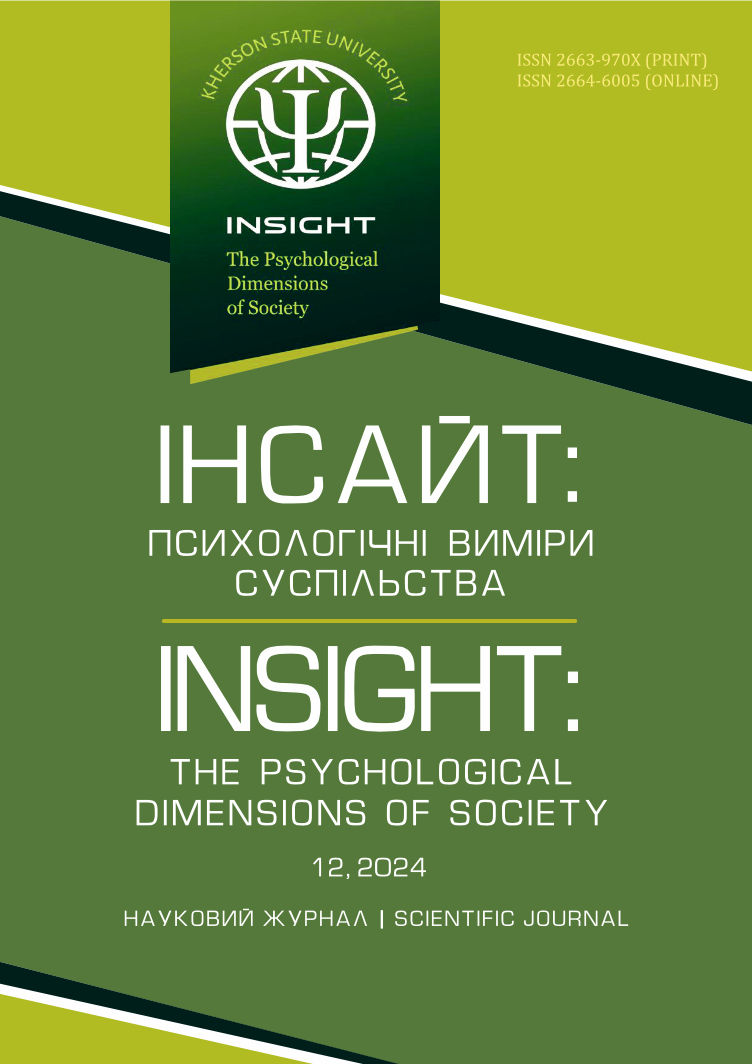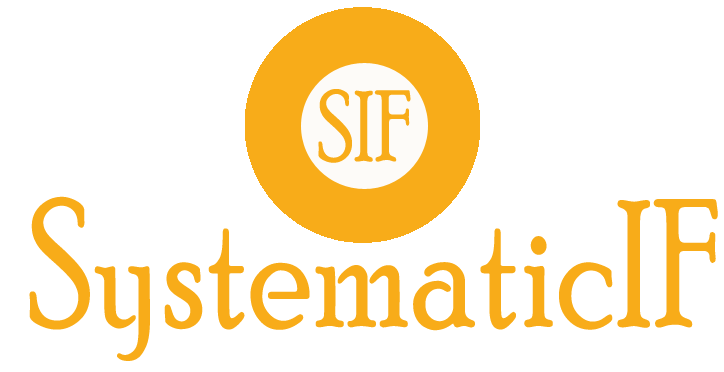Дослідження впливу соціальних мереж на прояв агресії у підлітків
Анотація
Підлітки – найбільш активна, а отже, і найбільш вразлива категорія інтернет-користувачів. Метою цього дослідження є вивчити взаємозв’язок між показниками залежності від соціальних мереж та агресії в підлітків 11–14 років. Методи. Застосовано такі методи дослідження: серед учасників було проведено опитування для збору інформації; тестування проводили з використанням стандартизованих методик, як-от опитувальник агресії Басса-Перрі, тест на інтернет-залежність Кімберлі Янг та шкала проблемного використання інтернету; дані були проаналізовані за допомогою ретельного статистичного аналізу. Зокрема, застосовано t-критерій Стьюдента, кореляційний аналіз із розрахунком коефіцієнта Пірсона, а також використано аналітичну платформу Statista 8.0. Результати. У дослідженій вибірці виявлено високий рівень загальної агресії (22.0% продемонстрували високий рівень). Статистично значущої відмінності в рівні агресії між хлопцями й дівчатами виявлено не було. Встановлено значну пряму кореляцію між показниками агресії та рівнем інтернет-залежності. Аналізування кореляції між рівнем агресії з використанням соціальних мереж не показав суттєвого зв’язку між цими ознаками в загальній популяції. Виявлено прямий зв’язок між агресією та використанням соціальних мереж у респондентів із високим рівнем залежності. Зв’язок між інтернет-залежністю та залежністю від соціальних мереж проявився по-різному між статями: хлопці демонстрували більш виражену прив’язаність до інтернету в цілому, тоді як дівчата були більш залежними від спілкування в соціальних мережах. Дискусія і висновки. Результати показали, що існує кореляція між залежністю від соціальних мереж та агресією, але вона не є лінійною. Необхідно дослідити додаткові фактори, які сприяють більш високому рівню агресії у дітей та молоді. Отримані результати сприяють розумінню взаємозв’язку між використанням соціальних мереж і рівнями агресії, що є частиною ширшої проблеми трансформації соціальних відносин під впливом інформаційних технологій. У практичному плані дані можуть бути використані при плануванні роботи соціальними педагогами й батькам, для корекції поведінки та соціальної адаптації підлітків.
Завантаження
Посилання
Aparicio-Martínez P., Ruiz-Rubio M., Perea-Moreno A. J., Martínez-Jiménez M. P., Pagliari C., Redel-Macías M. D., Vaquero-Abellán M. Gender differences in the addiction to social networks in the Southern Spanish university students. Telematics and Informatics. 2019. Vol. 46. P. 101304. https://doi.org/10.1016/j.tele.2019.101304
Brito-Montes J., Canto-Lugo E., Huerta-Quintanilla R. Modularity, balance, and frustration in student social networks: The role of negative relationships in communities. PLoS One. 2022. Vol. 17. e0278647. https://doi.org/10.1371/journal.pone.0278647
Cuadrado E., Tabernero C., Castillo-Mayén R., Luque B., Moreno-Bella E. Motives for using social networks and social network addiction in a time of pandemic. Cyberpsychology: Journal of Psychosocial Research on Cyberspace. 2022. Vol. 16(5). P. 3. https://doi.org/10.5817/CP2022-5-3
Demirtaş Madran H. A., Ferligül Çakilci E. The relationship between aggression and online video game addiction: A study on massively multiplayer online video game players. Anadolu Psikiyatri Dergisi. 2014. Vol. 15. P. 99–107. http://dx.doi.org/10.5455/apd.39828
Finkelhor D., Walsh K., Jones L., Mitchell K., Collier A. Youth internet safety education: Aligning programs with the evidence base. Trauma, Violence, & Abuse. 2020. Vol. 22(5). P. 1233–1247. https://doi.org/10.1177/1524838020916257
García-Fernández C. M., Moreno-Moya M., Ortega-Ruiz R., Romera E. M. Adolescent involvement in cybergossip: Influence on social adjustment, bullying and cyberbullying. The Spanish Journal of Psychology. 2022. Vol. 25. e6. https://doi.org/10.1017/SJP.2022.3
Hishan S. S., Jaiprakash H., Ramakrishnan S., Mohanraj J., Shanker J., Keong L. B. Prevalence and socio-demographic association of depression, anxiety and stress among university students. International Journal of Engineering and Technology (UAE). 2018. Vol. 7(2.29). P. 688–691. https://doi.org/10.14419/ijet.v7i2.29.13998
House of Commons. Impact of social media and screen-use on young people’s health. Science and Technology Committee, House of Commons, 2019. https://publications.parliament.uk/pa/cm201719/cmselect/cmsctech/822/822.pdf
Hynes P. Social networks and belonging. In The dispersal and social exclusion of asylum seekers (pp. 155–182). Bristol University Press, 2022. https://doi.org/10.2307/j.ctt9qgrp9.14
Kennedy K. Positive and negative effects of social media on adolescent well-being [Master’s thesis, Minnesota State University]. Cornestone. 2019. https://cornerstone.lib.mnsu.edu/cgi/viewcontent.cgi?article=1923&context=etds
Liu C. Y., Kuo F. Y. A study of Internet addiction through the lens of the interpersonal theory. CyberPsychology & Behavior. 2007. Vol. 10(6). P. 799–804. https://doi.org/10.1089/cpb.2007.9951
Mensah S. O., Nizam I. The impact of social media on students’ academic performance – A case of Malaysia Tertiary Institution. International Journal of Education, Learning and Training. 2016. Vol. 1(1). P. 14–21.
O’Keeffe G. S., Clarke-Pearson K., Council on Communications and Media. The impact of social media on children, adolescents, and families. Pediatrics. 2020. Vol. 127(4). P. 800–804. https://doi.org/10.1542/peds.2011-0054
Perišin D., Siniša O. Connection between exposure to Internet content and violent behavior among students [Conference presentation]. “Research and Education Challenges toward the Future--ICRAE 2013” International Conference, Shkodër, Albania. 2013, May 24–25. https://files.eric.ed.gov/fulltext/ED565463.pdf
Plaff D. W. Neuroscience in the 21st century: From basic to clinical (3rd ed.). Springer, 2022. https://doi.org/10.1007/978-3-030-88832-9
Primi C., Fioravanti G., Casale S., Donati M. A. Measuring problematic Facebook use among adolescents and young adults with the Bergen Facebook Addiction Scale: A psychometric analysis by applying item response theory. International Journal of Environmental Research and Public Health. 2021. Vol. 18(6). P. 2979. https://doi.org/10.3390/ijerph18062979
Puma-Chavez N., Quispe-Escobar J., Hurtado-Mazeyra A., Cejudo C. L. Use of social networks in university studies: A Peruvian case study. Education Sciences. 2022. Vol. 12(12). P. 893. https://doi.org/10.3390/educsci12120893
Romera E. M., Camacho A., Ortega-Ruiz R., Falla D. Cybergossip, cyberaggression, problematic internet use and family communication. Comunicar. 2021. Vol. 29(67). P. 61–71. https://doi.org/10.3916/C67-2021-05
Salarvand S., Bagheri Z., Keshvari M., Dalvand P., Gheshlagh R. G., Keshvari M. The prevalence of internet addiction and its relations to the self esteem and life satisfaction in students of a medical university. Acta Medica Iranica. 2018. Vol. 56(6). P. 392–397.
Schick A., Cierpka M. Risk factors and prevention of aggressive behavior in children and adolescents. Journal for Educational Research Online. 2016. Vol. 8(1). P. 90–109. https://doi.org/10.25656/01:12034
Sedykh K., Myshko N. Psychological consequences of bullying. Psychology and Personality. 2022. Vol. 22(2). P. 186–198. https://doi.org/10.33989/2226-4078.2022.2.265497
Spytska L. Social-psychological peculiarities of youth with delinquent behavior. Youth Voice Journal. 2023. 2. P. 9–17.
Umoru T., Olabode A. Social psychological concept of aggression. In A. Ogidiolu D. Ajibade V. Kakwagh (Eds.), Social Sciences; Conceptual, Theoretical and Methodological Analysis. Kogi State University, 2022. P. 127–148.
Zhao J., Gao F., Xu Y., Sun Y., Han L. The relationship between shyness and aggression: The multiple mediation of peer victimization and security and the moderation of parent-child attachment. Personality and Individual Differences. 2020. Vol. 156. P. 109733. https://doi.org/10.1016/j.paid.2019.109733
Автори, які публікуються у науковому журналі, погоджуються з наступними умовами:
· Всі наукові праці можуть вільно копіюватися і поширюватися на будь якому носії і в будь якому форматі, за умови зазначення покликань на вихідні дані наукової праці.
· Автори залишають за собою право на авторство своєї роботи та передають журналу право першої публікації цієї роботи на умовах ліцензії Creative Commons Attribution License.
· Автори мають право укладати самостійні додаткові угоди щодо неексклюзивного розповсюдження роботи у тому вигляді, в якому вона була опублікована цим журналом (інституційний репозитатрій, особистий веб-сайт, монографія), здійснивши первинне покликання на публікацію роботи в цьому журналі.




































